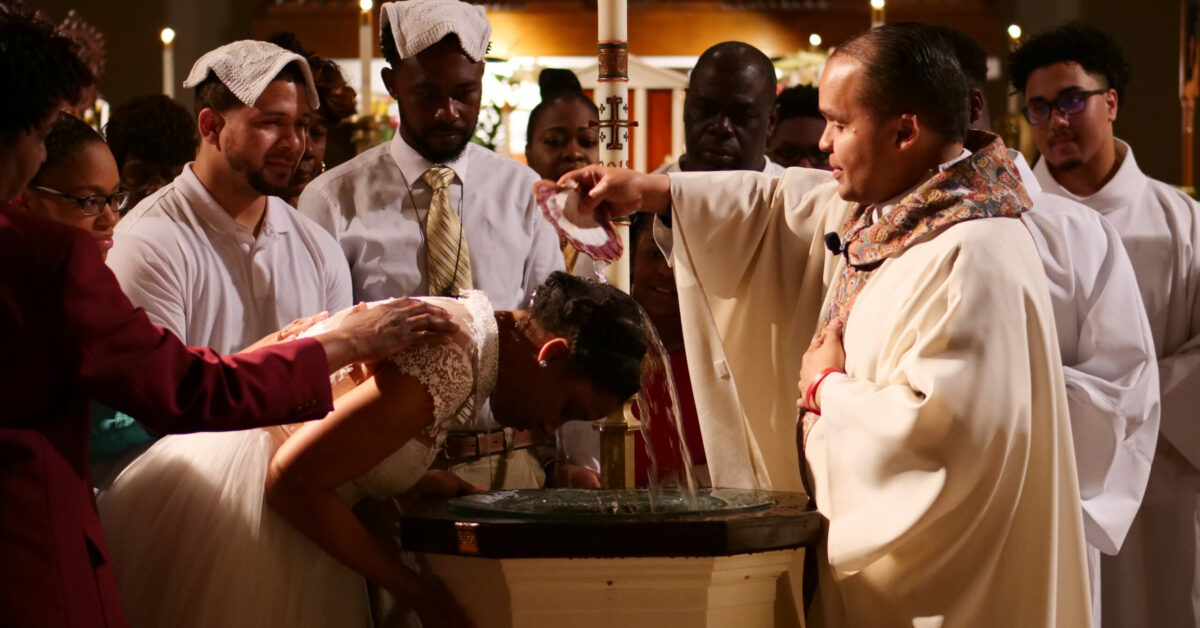Images of Baptism: Participation in the Death, Burial, and Resurrection of Christ
It is the quintessential image of baptismal images as Paul says in Romans 6: Do you not know that all of us who have been baptized into Christ Jesus were baptized into his death? We were buried therefore with him by baptism into death, in order that, just as Christ was raised from the dead by the glory of the Father, we too might walk in newness of life (Romans 6:3-4). Since Vatican II with its proclamation of the Paschal Mystery, it has become the chief image for baptism. The primary pattern of culminating the catechumenal process at the Easter Vigil as expressing Christ’s Passover from death to life has only cemented this primary association. In its predominancy lies both the challenge and the gift. The challenge? Ignoring other images in deference to this one. The remainder of the blogs in this series will address that challenge. The gift? In Maxwell Johnson’s words, “How, then, might this foundational and rich image or metaphor of baptismal death, burial and resurrection in Christ be rescued from the realm of contemporary cliché and brought to new life within the church today?” (Images of Baptism, 5).
New life for this image surfaces under a number of themes. First, Johnson acknowledges that death must truly be death for us. There must be no escaping it. We must let death be death. That means we must experience our dying as death. Quoting Jennifer Glenn, he notes the unassailing loss of death: “The vision of death lurking within the experience of sickness seems to cut off the future absolutely, at least from the experiential and imaginative viewpoint. With the loss of the future goes the loss of meaning…life and its relationships threaten to become absurd” (8). In this experience death is not cosmetized at all. And Christ’s death must fully be death. He must be encountered as the crucified Christ who cries out in his forsakenness.
Experiencing death as death raises the question, what does our death and burial in him mean? Well, it means hope. As Johnson says, “For Paul, baptism is really about our participation in the death and burial of Christ in the hope of our ultimate resurrection in him….Whatever the future holds in Christ, because of baptism death itself is a reality and experience already behind us! . . . Because of baptism into Christ we are already dead! (18-19).
This means for Christians that baptism becomes, as they approach death, the rehearsal for death. Quoting the late Joseph Cardinal Bernardin who wrote of his own impending death, “Our participation in the paschal mystery—in the suffering, death, and resurrection of Jesus—brings a certain freedom: the freedom to let go, to surrender ourselves to the living God, to place ourselves completely in his hands, knowing that ultimately he will win out!….It’s in the act of abandonment that we experience redemption, that we find life, peace, and joy in the midst of physical, emotional, and spiritual suffering” (23).
That experience of hope in the midst of death—a baptismal experience—has implications for a church that lives as though dead in the world. Living in hope as a result of dying and rising in Christ means that the church can fully live in mission to the world that God will renew in the living One. As Johnson expresses, “A church dead and buried by baptism into Christ is liberated from the fear of death itself and, therefore, can dare to risk itself in a mission of suffering service in the world because it knows and seeks to know only the cross and suffering with the world as the way to resurrection” (28). A church buried with Christ in baptism into his death is a church that can live in the resurrection for the sake of the world. So Johnson can affirm, “From that watery grave emerges a servant community of the cross, which expects nothing other than what its Servant-Master himself endured and experienced. Who knows what kind of church might yet arise when such baptismal-Paschal Mystery imagery is embraced by the baptized themselves?” (29). Then baptism into the death, burial and resurrection of Christ will truly be a living metaphor in the life of the redeemed community of the crucified One.
